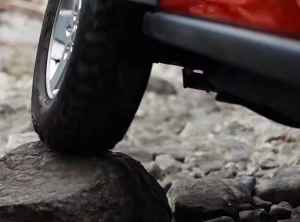Ground clearance, also known as ride height, is the space between the base of your vehicle’s tire and the lowest point of the vehicle, typically the chassis. This measurement is critical as it determines how well a vehicle can handle various types of roads and obstacles without causing damage to its undercarriage. For anyone who drives frequently in areas with high bumps, uneven roads, or off-road conditions, understanding ground clearance is essential to prevent costly repairs and maintain vehicle integrity. It is a crucial factor for various vehicle designs, influencing not only the vehicle’s ability to avoid physical damage but also its aesthetic and driving dynamics. Higher ground clearance can be particularly advantageous in regions with poor road infrastructure or for drivers who enjoy off-road adventures.
Measuring Ground Clearance
To accurately measure ground clearance, one should look for the shortest distance between any mechanical part of the vehicle’s undercarriage and the ground. This is usually measured when the car is unloaded to maintain standardization across different models and makes. Proper measurement is essential, especially when preparing for conditions that might pose a risk to the vehicle’s underbody, such as off-roading or driving through snow-covered roads. Knowing this measurement helps drivers make informed decisions about where they can take their vehicles safely without damage. The ground clearance can vary significantly between different types of vehicles; typically, an average car will have a lower ground clearance compared to a dedicated off-road vehicle, which needs to navigate rougher terrain.
Significance of Ground Clearance
The right ground clearance is vital for preventing the undercarriage of your vehicle from being damaged by uneven roads, bumps, or obstacles. For vehicles like SUVs, intended for rough terrain, a higher ground clearance is beneficial. However, higher ground clearance may increase the vehicle’s center of gravity, potentially affecting stability and handling. Here’s a list of situations where ground clearance is particularly important:
- Off-road driving
- Navigating speed bumps and steep driveways
- Driving on snow-covered roads.
Optimal Ground Clearance for Different Uses
How much ground clearance you need depends heavily on the types of driving conditions you encounter 
Comparative Analysis of Ground Clearance in Various Vehicles
Vehicle type greatly influences ground clearance standards. Sports cars typically have lower ground clearances for enhanced stability and handling at high speeds, while SUVs boast higher clearances suitable for off-road challenges. Here’s a detailed comparison:
| Vehicle Type | Typical Ground Clearance (inches) |
| Sports Car | 4-5 |
| Sedan | 5-6.5 |
| Hatchback | 5.5-6.5 |
| SUV | 7-9+ |
| Off-Road Specialized | 10+ |
These values indicate the suitability of each vehicle type for different driving conditions and terrains.
Modifying Ground Clearance
Modifying a vehicle’s ground clearance can significantly enhance its utility and adapt it to more specific 
Vehicles with the Highest Ground Clearance
Vehicles designed for rugged terrain or off-road adventures typically boast the highest ground clearances. These include many SUVs and trucks that are built to handle not just off-road conditions but also large obstacles and rough terrain without damaging the undercarriage. For example, models like the Jeep Wrangler or Land Rover Defender are renowned for their high ground clearance, making them excellent choices for anyone needing a vehicle capable of heavy-duty, all-terrain travel. The elevated design not only prevents physical damage but also provides a better view of the road, which can be crucial in unpredictable off-road conditions.
Conclusion
Ground clearance is a fundamental aspect of vehicle design that affects a vehicle’s practicality, safety, and capability. It determines how well a vehicle can avoid surface obstacles and handle rough terrain, making it essential for vehicles used in off-road and adverse road conditions. When selecting a vehicle, consider the typical driving conditions you’ll face and choose a ground clearance that will allow you to navigate those conditions safely and efficiently. Additionally, for those looking to enhance their vehicle’s performance or adapt it to extreme conditions, modifications like lift kits can provide the necessary adjustments to ensure your vehicle meets your demands, offering both adventure and assurance on any terrain.

Add Comment